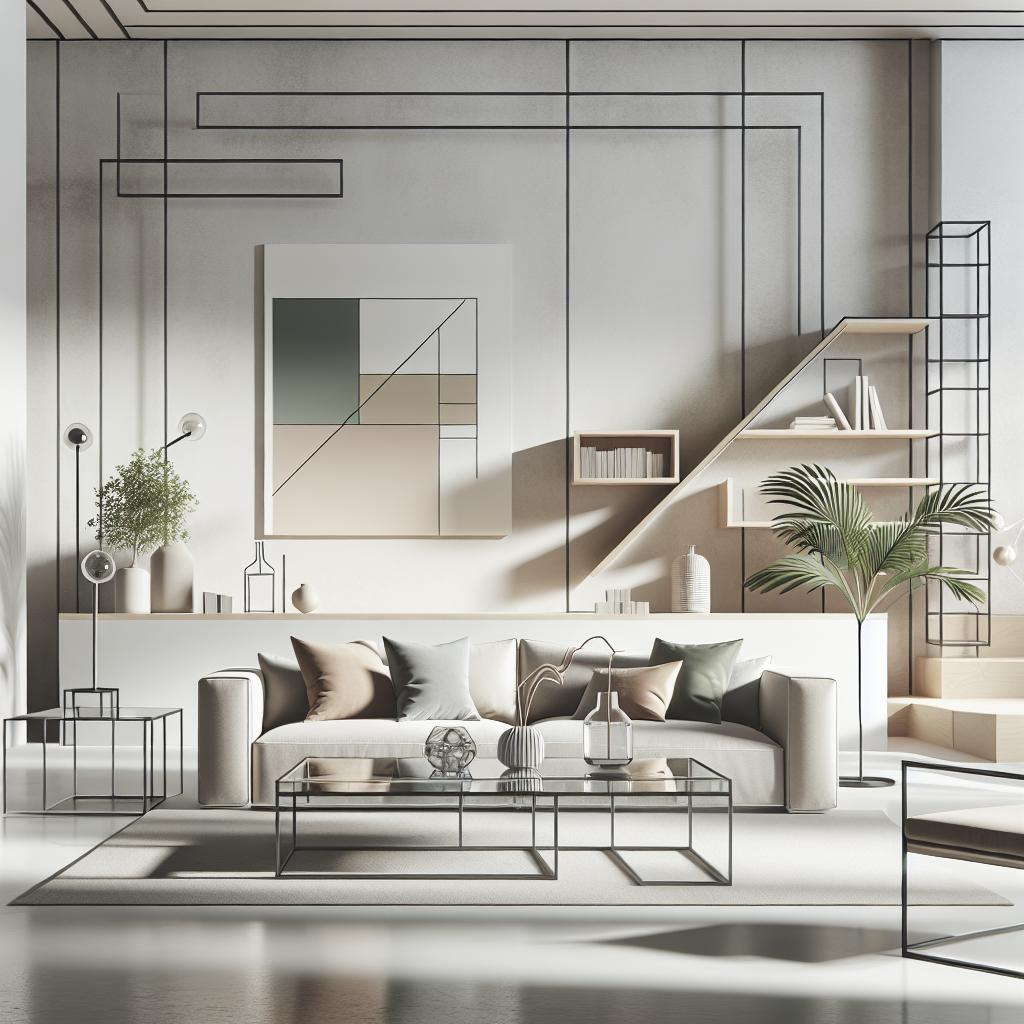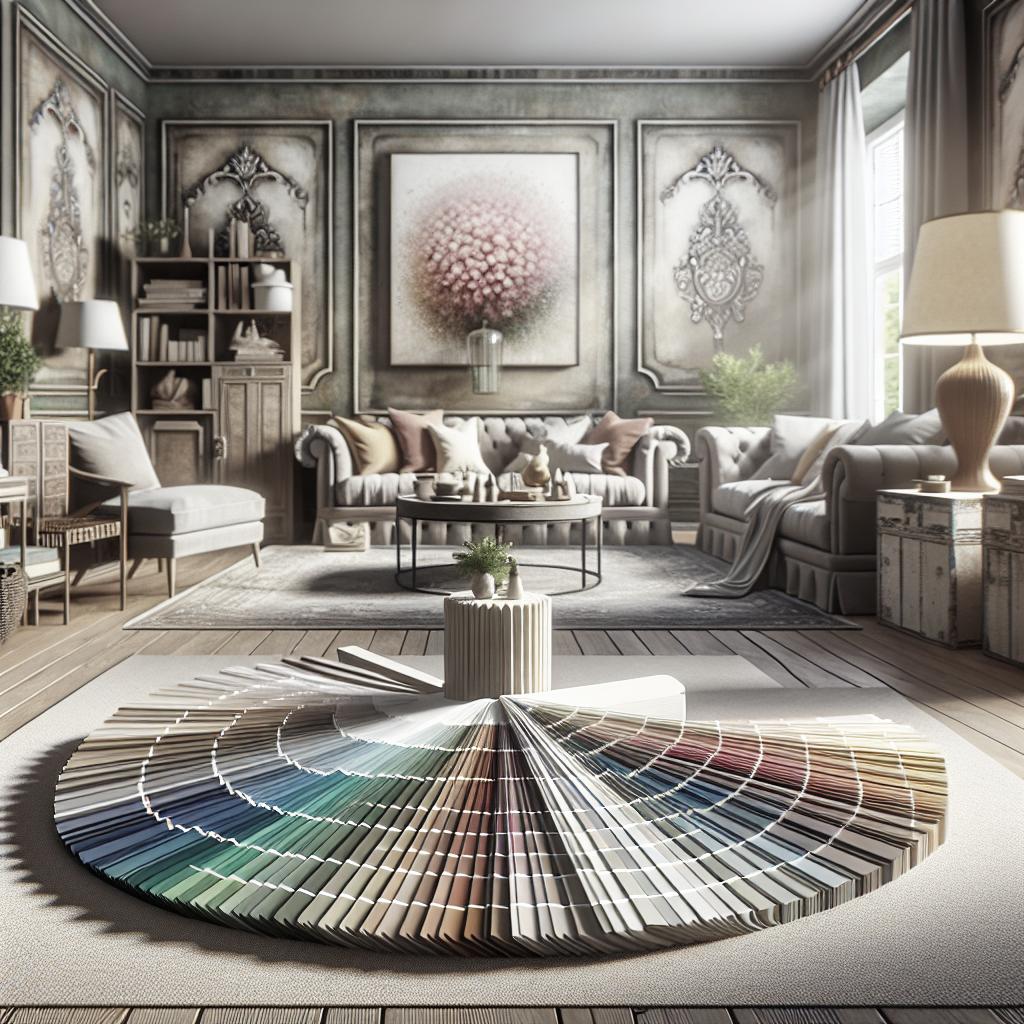Lighting is one of the most crucial aspects of interior design, influencing both functionality and ambiance. When done right, layering different types of lighting can transform a space, adding depth and texture while also addressing specific room needs. In this blog post, we’ll delve into the art of layering lighting effectively by exploring three main categories: Ambient Lighting, Task Lighting, and Accent Lighting. Each category plays a unique role in designing a well-lit space, and within each category, we’ll discuss specific lighting options—like chandeliers, sconces, and track lighting—that can elevate your interior. Whether you’re revamping your living space or planning a new room, understanding how to mix and match lighting types will give you the tools to create an inviting atmosphere. Join us as we illuminate the path to a beautifully lit home.
Ambient Lighting
Ambient lighting, or general lighting, serves as the primary source of light in a room. It’s designed to provide an even amount of illumination, allowing for comfortable visibility.
Chandeliers
Chandeliers are a stunning way to introduce ambient lighting to a room. These fixtures offer elegance and can act as focal points, making them perfect for spaces like dining rooms or grand entrances. They come in various styles, from classic crystal to modern minimalist designs, allowing them to cater to different décor themes. When installing a chandelier, consider the size of the room and the height of the ceiling to ensure it complements the space without overwhelming it. The right chandelier will illuminate the room evenly while adding a touch of sophistication. In addition to aesthetic appeal, the functionality of a chandelier should be considered. Choose a fixture that offers adjustable brightness settings to cater to different moods and occasions. Incorporating dimmable light bulbs is a practical way to achieve this flexibility. Furthermore, proper installation is crucial for safety and optimal light distribution; thus, hiring a professional electrician is often advisable.
Pendants
Pendants are another versatile ambient lighting option. Unlike chandeliers, they can hang singularly or in groups, offering flexibility in terms of placement and style. They’re well-suited for kitchens, where they can highlight islands or dining areas, or in bathrooms over vanities. Available in a range of materials and shapes, pendants can be bold statement pieces or subtle additions that complement the existing interior design. When layering lighting with pendants, consider their scale and spacing. Too many pendant lights can clutter the room; therefore, balance is key. The height at which they hang is also important, often placed at eye level to prevent glare. Consider pendant lighting with opaque shades for a softer glow or open-filament designs for a brighter, more industrial feel. The versatility of pendant lights in design makes them an essential element for enhancing ambient lighting in various settings.
Recessed Cans
Recessed cans—commonly known as recessed or can lights—are a subtle yet effective ambient lighting option. They are installed into the ceiling, providing a clean and unobtrusive light source. This minimalism makes them suitable for a wide range of rooms, from living spaces to kitchens. Recessed lighting provides excellent coverage and, when strategically placed, can reduce shadows and illuminate every corner. The installation of recessed lights should be carefully planned, considering the room’s layout and intended activities. They are excellent for providing consistent, wide-spread illumination while avoiding the visual clutter of hanging fixtures. Dimmers can further enhance their versatility, allowing you to change the ambiance as desired. However, recessed lighting works best when complemented with other types of lighting, such as task or accent lights, to ensure a multidimensional and inviting space.
Task Lighting
Task lighting is focused lighting that provides the illumination needed for specific tasks, such as reading, cooking, or working. It enhances clarity and reduces eye strain, making it a crucial component of an effective lighting plan.
Sconces
Sconces are wall-mounted fixtures that can be used to deliver focused task lighting while adding a decorative touch. They are perfect for providing light in areas where floor or table space is limited, such as hallways or beside a bed. Sconces are available in various styles, from industrial to elegant, and can be chosen to complement or contrast the existing décor. When integrating sconces, consider their placement to maximize functionality. For reading or bedside tasks, position them at eye level and ensure they have adjustable arms or shades for directional control. Additionally, sconces with dimmable features allow for greater flexibility, making them an adaptable choice for any situation. Their ability to be both functional and stylish makes sconces a valuable addition to any layer lighting plan.
Under Cabinet Lighting
Under cabinet lighting is particularly popular in kitchens and workspaces. These lights, installed beneath upper cabinets, illuminate countertops to provide a bright, focused light source for tasks such as chopping vegetables or reading recipes. This type of lighting is ideal for eliminating shadows that overhead lights alone might cast, thereby improving visibility and enhancing safety in task-oriented areas. LED strip lights or puck lights are common choices for under cabinet lighting, each offering different benefits. LED strips provide a continuous wash of light, creating an even effect, while puck lights can produce pools of light that accentuate specific spots. The choice depends on the desired effect and practical needs. Under cabinet lighting not only boosts functionality but also adds a modern touch to rooms by discreetly highlighting architectural elements.
Lamps
Lamps are highly versatile task lighting solutions, available in various sizes, shapes, and styles. They are perfect for spaces that require adjustable, directed light, such as desks, bedside tables, or cozy reading nooks. Table lamps and floor lamps can be chosen to match the design aesthetic of the room, serving both practical and decorative purposes. The effectiveness of task lighting with lamps lies in their positioning and adjustability. Opt for lamps with adjustable necks or movable heads to direct light precisely where needed. For reading, a lamp should be positioned so the light falls directly onto the page without creating glare. Furthermore, a lamp’s shade color and transparency affect the light quality, with darker shades providing more focused light and lighter shades offering ambient diffusion. Choosing the right lamp not only ensures effective task lighting but adds character and charm to a space.
Accent Lighting
Accent lighting is used to highlight specific features within a room, such as artwork, architectural details, or plants. It adds depth and drama, creating visual interest and enhancing the overall ambiance of a space.
Track Lighting
Track lighting is a flexible accent lighting solution that consists of multiple light fixtures attached to a track, which is mounted on the ceiling or wall. This system allows for easy adjustment of light positioning, making it ideal for highlighting different elements within a room. It’s commonly used in kitchens, art galleries, and living areas where adjustable spotlighting can be beneficial. When using track lighting, consider what features you wish to accentuate. Track lighting can be set to focus on countertops, artwork, or even architectural features, bringing the desired elements into sharp relief. Choose an aesthetically pleasing track design that complements the room’s style. Both linear and flexible track systems are available, and the choice depends on the desired arrangement and specific room characteristics. By strategically positioning track lighting, you can dramatically enhance the ambiance and create a dynamic visual experience.
Picture Lights
Picture lights are specifically designed to illuminate artwork or highlight decorative wall elements. These fixtures attach to the wall above frames, providing a focused beam of light that enhances the visual appeal of paintings or photographs. Picture lights come in various styles and finishes, ensuring they can blend seamlessly with your existing décor while drawing attention to chosen focal points. Proper installation of picture lights involves considering the size of the artwork and the distance from which the light will fall. The angle and intensity should be such that they enhance without overpowering or casting unwanted glare. LED options are popular for picture lights, as they emit little heat and prevent any damage to artwork over time. By choosing the right picture light, you can elevate your treasured pieces, making them stand out within your interior design. Final Thoughts: Incorporating various types of lighting into your interior design can fundamentally transform how a space feels and functions. By understanding and applying principles of ambient, task, and accent lighting, you can create a layered effect that meets practical needs while enhancing aesthetic appeal. Here’s a summary table to encapsulate the essentials:
| Type of Lighting | Lighting Options | Best Uses | Considerations |
|---|---|---|---|
| Ambient Lighting | Chandeliers, Pendants, Recessed Cans | General illumination, establishes room tone | Size, style, installation height |
| Task Lighting | Sconces, Under Cabinet Lighting, Lamps | Reading, cooking, specific tasks | Adjustability, positioning, brightness |
| Accent Lighting | Track Lighting, Picture Lights | Highlighting features, creating focal points | Focus, angle, intensity |
By expertly layering these different types of lighting, you not only meet functional needs but also bring out the best in your interior design, creating a harmonious and inviting environment.


